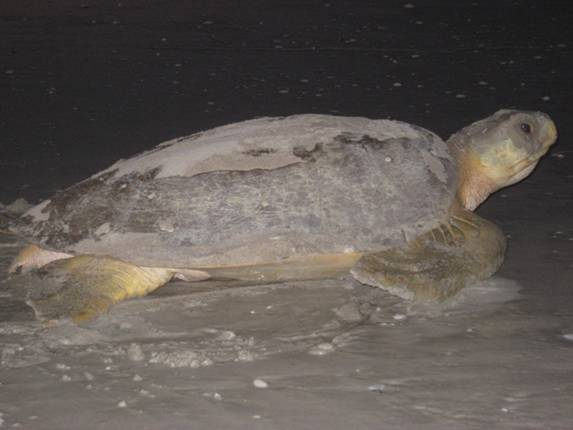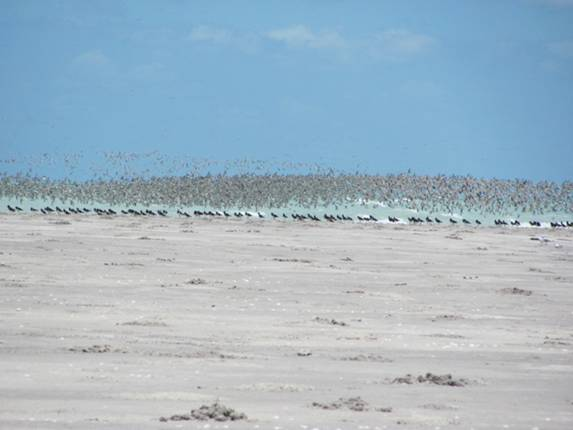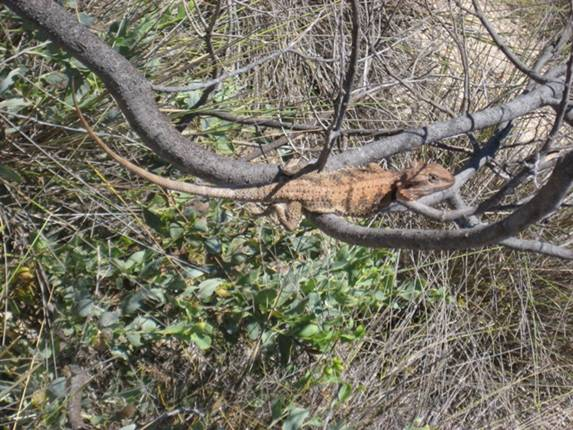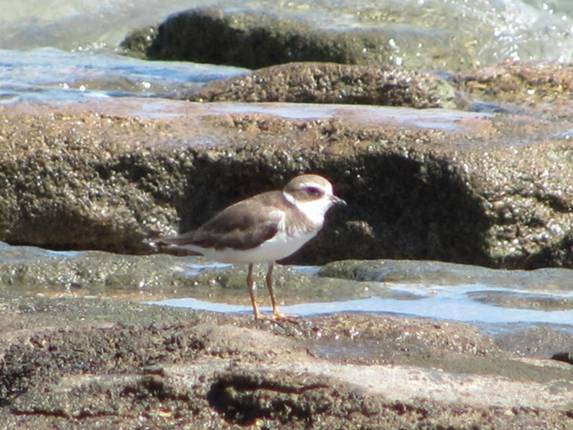We have just completed our summer counts for the shorebirds in the northwest of Western Australia. This project is monitoring the Yellow Sea migrants in Australia and has been done by dedicated volunteers for several years now. Our main challenge this time was that the tides were early and so we had to get up very early! It is only possible to count the shorebirds two hours either side of high tide, due to the 10 metre tides around Broome, so we dutifully bounced crawled out of bed at 03:30am each day! The highlight of being up and on the beach so incredibly early was seeing the Flatback Turtles returning to the ocean after laying their eggs. What was unusual this time was that some of the turtles actually came out on the morning high tide to lay eggs, which is not commonly seen. We were so keen that after an afternoon nap we would all return to the beach to scan for individually marked shorebirds on the next incoming tide….we all have “sleep debt” now!

Flatback Turtle
We had a very frustrating time trying to count birds at one location on the far side of Roebuck Bay due to constant panic flights. It took us a while to work out what the problem was, but once we realised we had a Peregrine Falcon on the hunt we knew it was going to be hard work. It was at this point that I said I would count the Pied Oystercatchers and Grant could count the rest of the shorebirds! He was lucky they were mainly Great Knots and Bar-tailed Godwits!

A nightmare to count!
One mystery is the Eurasian Curlew that is present on 80 Mile Beach. Is it the same lost bird from several years ago? Why do birds get in the wrong “flyway” and end up in Broome? This is not the only “lost” bird, as we now have a Red-throated Pipit present on a local school oval and this has occurred on two other occasions in the last 15 years or so.
There has also been a Semipalmated Plover present in Broome since October 2009. This was very controversial when it first arrived, as it decided to live at the sewerage ponds and it was very hard to get really good photos. It was considered to be a possible Ringed Plover or Little Ringed Plover -both good rarities for Broome. It has been conclusively decided that it is a Semipalmated Plover and since the pond dried up it has relocated to a nearby beach and it is possible to get very close to it. A year has been and gone and it appears to want to stay in Broome!
A good website to look at the vagrants that have shown up in Australia in recent years is http://www.pbase.com/wildlifeimages/vagrants
Now for the promised “non bird” photo! Here is a Dwarf Bearded Dragon Pogona minor. It was a very impressive lizard!













“… a very impressive lizard.”
But, but,… is it DANGEROUS?
🙂
Your second picture shows the only nightmare I’d look forward to experiencing over and over again…
The biggest danger we have had from a lizard here is from getting a cramp from laughing-when Grant stopped to look at a bird and a lizard thought he was a tree and ran up his leg and into his shorts!
The huge flocks of shorebirds are really something-especially in a couple of months when they all start to colour up again. Thankfully we don’t have to count them every time we see them, but just appreciate the whole spectacle.